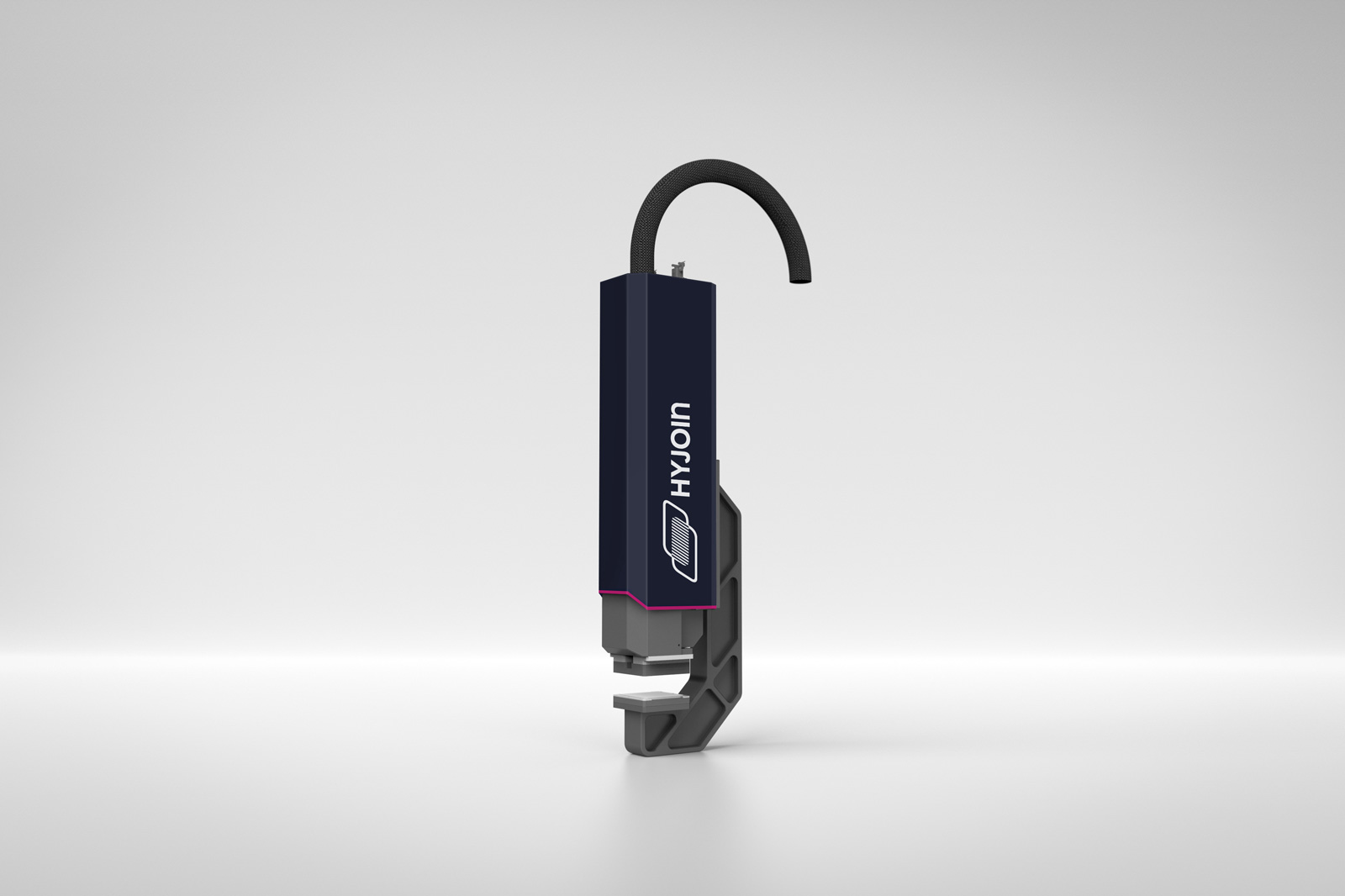Process
Thermal Direct Joining – The hyJOIN® Process
HYJOIN® thermal direct joining – also known as thermal hybrid joining – is our core IP and technology. It enables precise, durable, and recyclable connections between metal and plastic without adhesives or additional materials. By combining laser-based surface preparation, precise component fixation, electromagnetic induction, and controlled pressing, HYJOIN® delivers a fast, automated, and sustainable joining process that redefines the possibilities of lightweight design.
Laser Remote Structuring of Metal Component
With laserTREAT®, the metal surface is prepared using laser remote structuring (LRS). This creates a defined microstructure that enhances bonding strength and ensures long-term stability. An integrated cleaning system guarantees optimal surface conditions before joining.
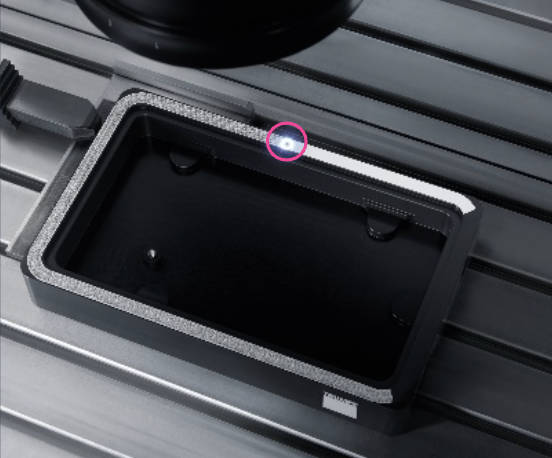
Component Fixation
The plastic and metal components are precisely positioned in the varioJOIN® or giroJOIN® systems using dedicated part holders and joining tools. Secure fixation ensures reproducibility and allows flexible handling, either manually or fully automated with robotic systems.
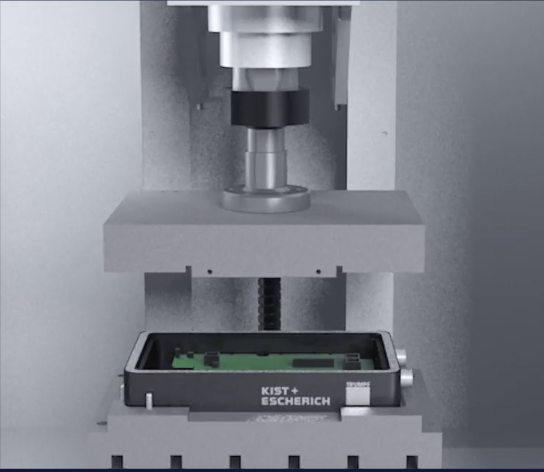
Electromagnetic Induction and Pressing
At the heart of the process is the coreJOIN® module in combination with coreSUPPLY® units. The inductor embedded in the joining die generates a concentrated electromagnetic field, inducing eddy currents in the metal. The metal heats rapidly and locally, softening the plastic at the interface. Controlled pressing ensures intimate contact and reliable bonding.
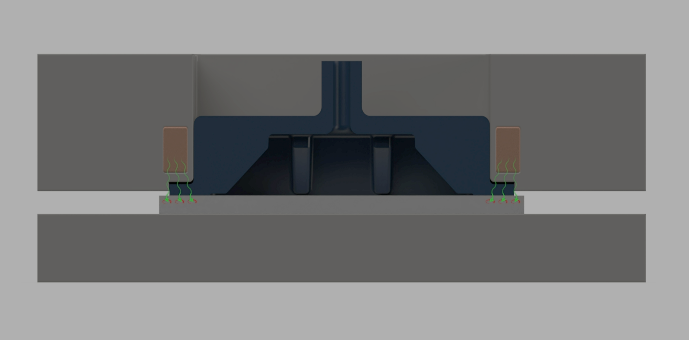
Joined Component
After passive cooling, the result is a solid metal-plastic hybrid joint – strong, media-tight, and fully recyclable. The joined component can be directly removed from the system or passed on within a fully automated line such as atroJOIN®, enabling efficient series production.
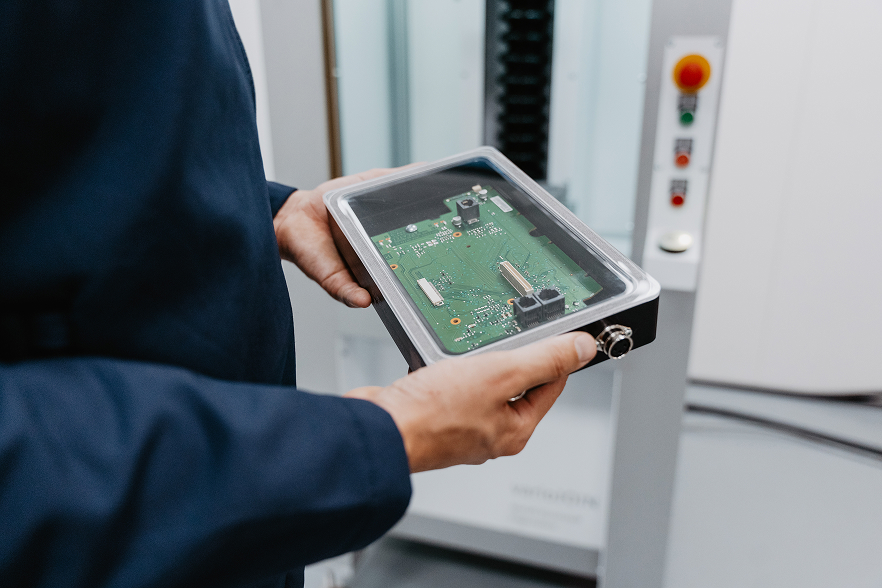
Any metal joined with any plastic
HYJOIN® enables durable and recyclable hybrid connections across a broad material spectrum – from commodity plastics to high-performance polymers, and from lightweight metals to advanced alloys. Plastics can be applied in unreinforced, filled, or reinforced grades, while metals are available from various manufacturing processes such as extrusion, casting, forging, or additive manufacturing.
Performance Highlights
- Strength: 15–30 MPa (tested according to DIN EN 1465)
- Aging stability: confirmed according to PV1209 (commonly used in automotive validation)
- Media tightness: up to 30 bar (depending on material combination)
Plastics (ranked by performance level)
Each class can be used as unreinforced, filled, or reinforced, offering maximum flexibility in stiffness, thermal stability, and strength.
Metals (ranked by performance & lightweight potential)
Metals can be produced via extrusion, casting, forging, 3D printing, or sintering, with properties tailored to specific applications.
Key advantages
High Performance Joining
Media Tight Connections
Cost Efficient Process
Aging Resistance
Lightweight Design
Fully Recyclable
Your product with
our solution
Automotive & Mobility
Battery housings & modules (e-mobility), Body & structural components, Interior/exterior parts (handles, consoles, trims)
Consumer Goods & Household
Household appliances (coffee machines, refrigerators, washing machines), Power tools (drills, mixers, garden tools), Sports equipment (bicycle components, fitness gear, outdoor equipment)
Electronics
Connectors & interfaces, Sensor and actuator housings, Thermal management, and cooling solutions (heat sinks with plastic housings)
New Energy
Battery modules & packs, Hydrogen systems (tanks, valves, pipelines), PV & wind components (housings, structural elements)
Healthcare / Medical
Medical device housings (pumps, analyzers, scanners), Sterile instruments (reusable & recyclable), Implant-related components
Aerospace & Defense
Cabin & interior components, Structural parts (titanium-plastic hybrids), Electronic housings (avionics systems)
Industrial Solutions
Pumps & valves, Machine & drive housings, Functional modules for industrial systems
(Any) industry
These are just examples. Our solutions adapt to countless industries wherever plastic and metal need to be joined.
